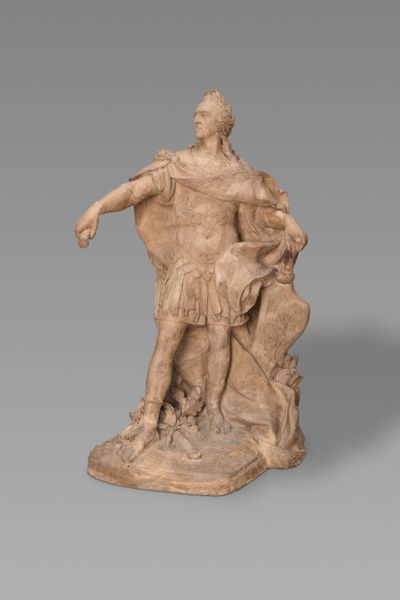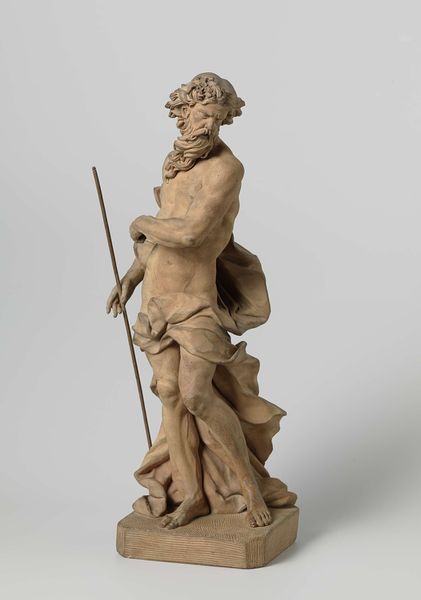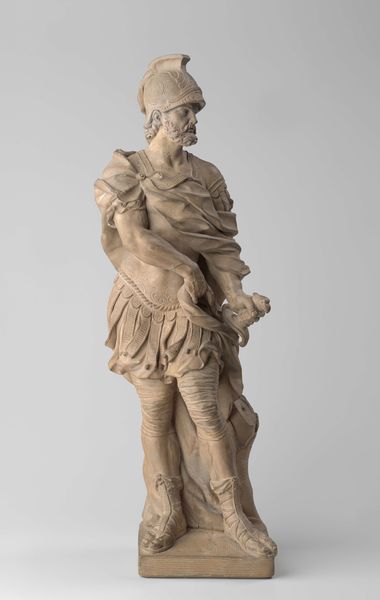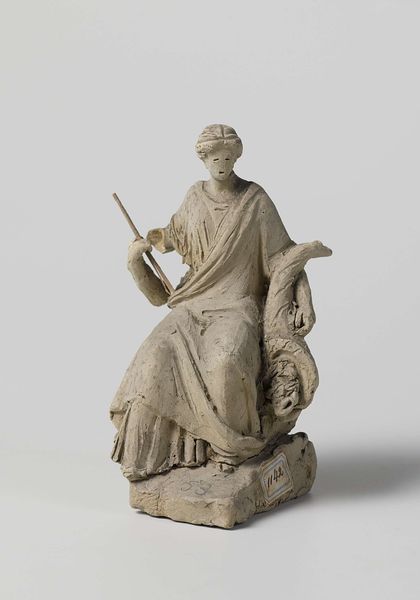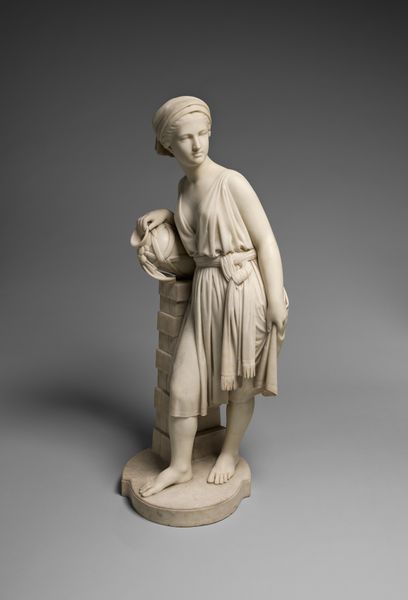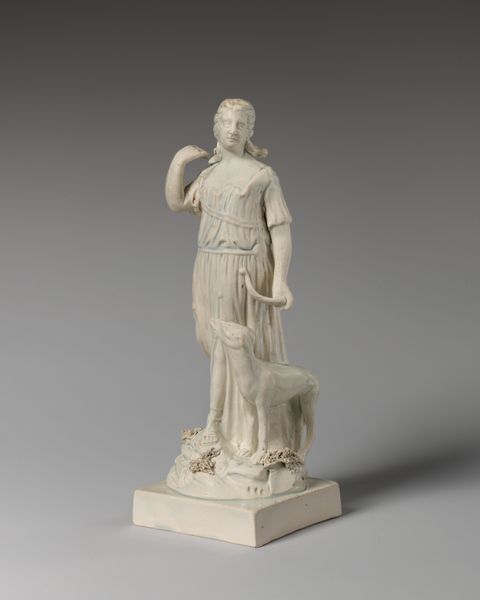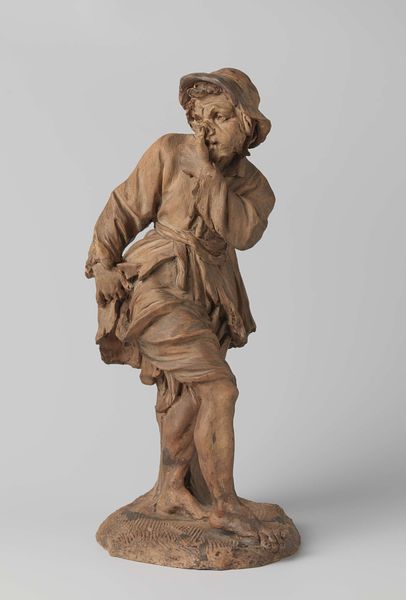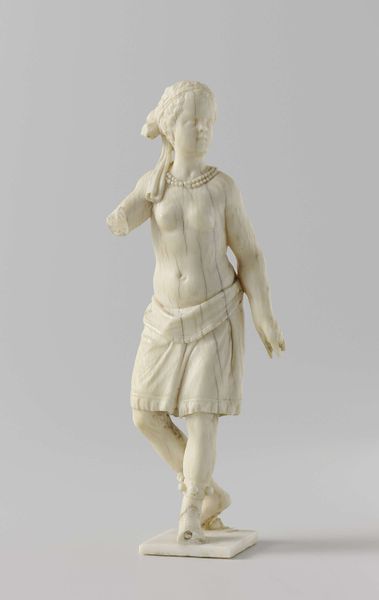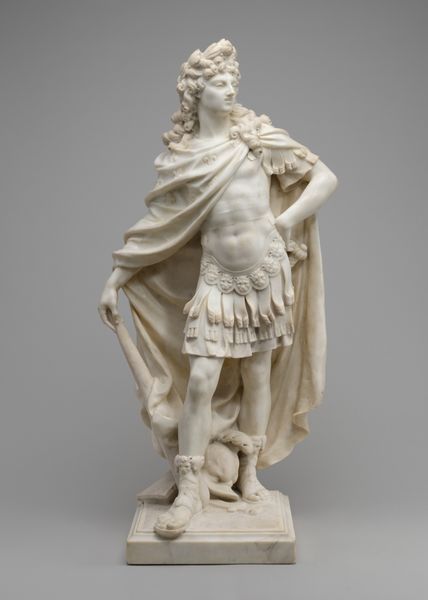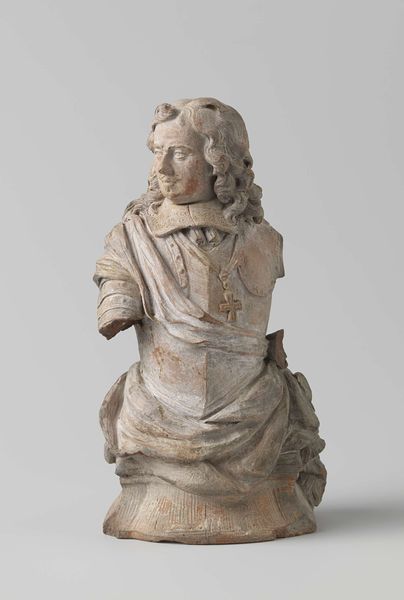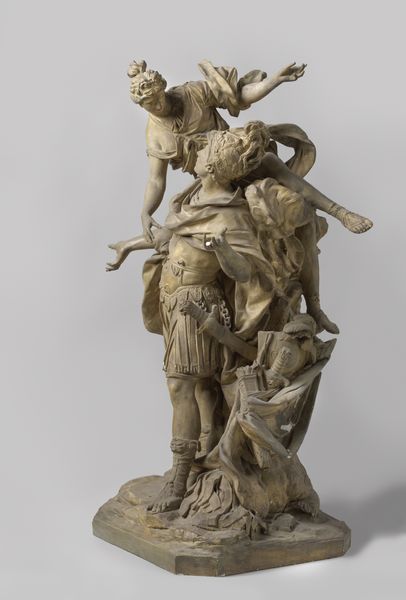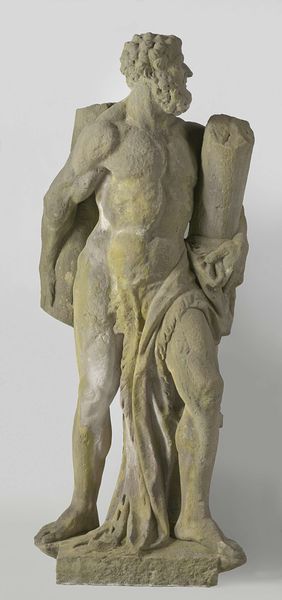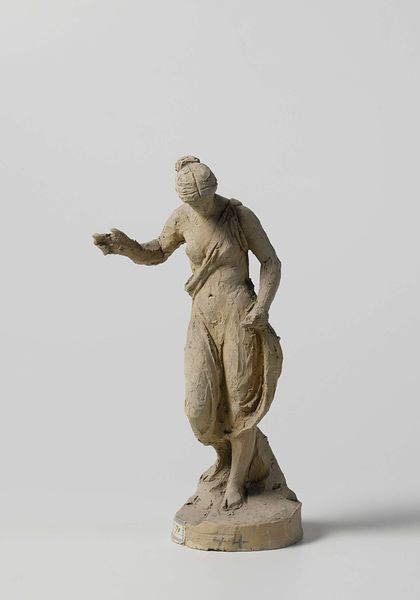
sculpture, marble
#
portrait
#
neoclacissism
#
stone
#
sculpture
#
figuration
#
sculpting
#
sculpture
#
men
#
decorative-art
#
marble
Dimensions: Height: 10 5/8 in. (27 cm)
Copyright: Public Domain
Editor: We're looking at a smaller marble sculpture today, "Model for a Statue of a Hero," created by Étienne-Hippolyte Maindron sometime between 1825 and 1845. It feels incomplete, perhaps a study for a larger piece. How do you see this within the broader context of its time? Curator: Well, considering its creation in the early to mid-19th century and its Neoclassical style, it's essential to consider how figures of heroism were being constructed and consumed during that era. Whose heroic image was being publicly promoted, and for what purpose? Was it tied to Napoleon's legacy, or perhaps earlier figures from antiquity? Editor: That’s interesting! I hadn’t thought about the role of museums in shaping the definition of a hero during that time. It also makes me think of this artwork's scale, suggesting the role of intimate reception versus something public. Curator: Precisely! Think about where a sculpture like this would likely have been displayed initially – perhaps within a collector's cabinet, rather than a public square. That shift impacts its role. This piece perhaps signifies the rise of a wealthy class interested in private admiration of heroism rather than public propaganda. Would you say this version humanizes its hero through its display scale and implied audience? Editor: That perspective really shifts how I interpret this work, because if the sculpture was intended to appeal to personal values over the political, Maindron also had to imbue these sculptures with symbolic value for their buyer. So fascinating! Curator: Yes, the intersection of art, the state, and the emerging role of wealthy individuals really adds layers to these historical artworks. The sculpting techniques are worth considering as well in respect to cultural narratives that support or refute those intersections. Editor: Definitely. Thinking about its Neoclassical style in conjunction with the era really has shed a new light on this sculpture. Thank you. Curator: You’re welcome. These intersections can lead to profound revelations about art's place in society.
Comments
No comments
Be the first to comment and join the conversation on the ultimate creative platform.
